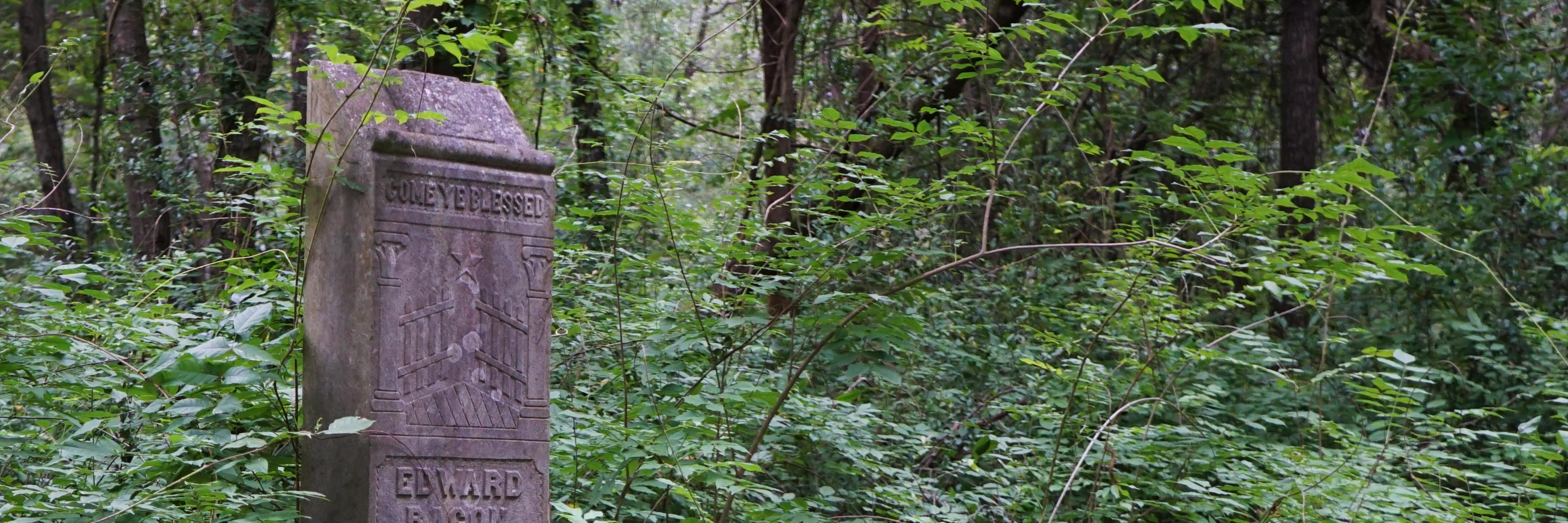Gospel Pilgrim Cemetery

Gospel Pilgrim Cemetery sits off Fourth Street in East Athens. The cemetery was founded 1882 by the Gospel Pilgrim Society, a Black benevolent organization, “to see to it that that deceased among their number, as well as all others of their race, not otherwise provided for, are properly and decently interred.” Over the course of its one-hundred-and twenty-one-year history, around 3,500 African Americans were buried in the cemetery (approximately twenty to twenty-five percent of those were formerly enslaved individuals). Most were interred during the cemetery’s heyday in the 1930s and 1940s, but many prominent Black Athenians from the late nineteenth and early twentieth centuries are buried at Gospel Pilgrim: Monroe Bowers “Pink” Morton was born a slave in 1856, but rose to become a wealthy Athenian and the owner of the Morton Theatre; Harriet Powers was a famous folk artist and quilter; Madison Davis went from slavery to the Georgia Legislature in 1868; and Ellen Green was a local resident who became a dean at Fisk University. Gradually, the cemetery fell into disarray and, after 1960, fewer and fewer people were laid to rest within its geographic bounds. In 1977, the last surviving member of the Gospel Pilgrim Society died of a heart attack. No long-term arrangement had been made for the cemetery's perpetual care, and it now has no legal owner. While nature as reclaimed the landscape, student and community groups sponsor occasional work-days to remove weeds, clear fallen branches, and pick-up trash. The last burials occurred in the early 2000s.
The men, women, and children interred in Gospel Pilgrim Cemetery are central to this project. The History of Gospel Pilgrim Cemetery traces the origins and evolution of the cemetery from its inception in 1882 until the modern day. Turning our attention to those buried within the cemetery, Gospel Pilgrim Biographies explores the lives of selected Athenians. As a carefully selected prosopographical sample, the men and women highlighted within this section represent various facets of the African-American experience in Athens, Georgia. Gospel Pilgrim Decedents, meanwhile, has a comprehensive list of men, women, and children interred in the cemetery. Using grave markers, obituaries, and death certificates, we have complied a list of individuals buried within the cemetery and, to the extent possible with archival silences, developed short biographies of each persons' life. Some decedents have marked graves, while others do not. Gospel Pilgrim Graves is based off an innovatory of burial locations in Gospel Pilgrim Cemetery, which was made by members of the University of Georgia's Horticulture Department. In addition to noting the location of marked and unmarked graves, this data records tombstone inscriptions: decedents' names, date of births, date of deaths, epithets, and iconography. Finally, Gospel Pilgrim Maps critical analyzes the spatial dynamics of human life and death. Maps of the cemetery document the final resting place of some of Athens most famous and remarkable individuals. Other maps indicates the last known residential addresses of those buried in Gospel Pilgrim Cemetery. How did racism, poverty, and de facto and de jure segregation shape life and death in southern college town, such as Athens, Georgia? These maps offer important answers to these questions.
Address: Bray Street and Fourth Street, Athens, GA 30601
NEXT: Oconee Hill Cemetery


